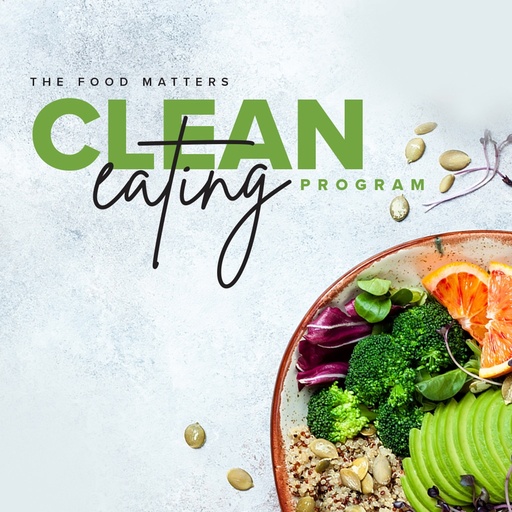What Is Your Body Trying To Tell You? 9 Symptoms You Shouldn't Ignore
The body is a magnificent machine. When things go awry, it generally doesn’t just shut down without warning, like an incandescent light bulb popping its filament. Instead it sends us little signals (think of them as gentle biological taps on the shoulder) letting us know that something is amiss.
“Physical signs and symptoms are ways your body tries to alert you to deeper imbalances,” says Elson M. Haas, MD, a San Rafael, Calif., physician with a natural-medicine approach and author of Staying Healthy with Nutrition (Celestial Arts, 2006). “Taking the time to decipher the body’s codes is always better than simply popping a pill and hoping the symptoms just go away. Ideally, we want to get to the causes of problems, not just suppress the end result of ill health.” But interpreting the body’s quirky Morse code requires a deep level of body awareness that, like any skill, takes time and practice to perfect. To that end, we recruited a handful of the country’s leading integrative health practitioners to help identify nine of the most common conditions underlying frequent, and sometimes mysterious, symptoms. Read on to clue into your body’s messages.
You’re Drinking Too Much Diet Soda…
One likely signal: Headaches
Background: Artificial sweeteners, particularly aspartame (found in Nutrasweet and Equal), can trigger headaches, even migraines. At highest risk are people with a genetic disorder called phenylketonuria (or PKU for short); they lack the enzyme needed to metabolize a substance (phenylalanine) that is created when the body breaks down aspartame. But even those without the genetic disorder may find that drinking diet soda results in brain fog or headache. Why? Animal studies have shown aspartame to be a potent neurotoxin, at least in young rats. I’m concerned about whether aspartame might cause nerve damage in humans, as well — or at least disrupt the nerve signaling that enables the brain to register satiety,” says Sharon Fowler, MPH, a faculty associate at the University of Texas Health Science Center at San Antonio who studies the health effects of artificial sweetener use. One of the prime suspects is the methanol in aspartame, which is broken down into formaldehyde, a known carcinogen. People who are sensitive to formaldehyde may experience headaches after ingesting aspartame.
Other signals: Intense cravings for sweet or salty foods, inability to focus, irritability
How to respond: When the urge for diet soda strikes, Kathie Swift, MS, RD, LDN, chief nutrition adviser for the online-based sites MyFoodMyHealth and My Foundation Diet, suggests drinking sparkling water flavored with a splash of 100 percent fruit juice and a squeeze of lime.
You’ve Got Candida Overgrowth…
One likely signal: Itchy ears, throat or mucus membranes
Background: The average American downs nearly 150 pounds of sugar and high-fructose corn syrup a year, according to the United States Department of Agriculture. And if you’re eating anywhere near that much sugar, you may have more than just a sweet tooth — your body may be hosting an unhealthy overgrowth of Candida albicans. A small amount of this common, yeast like fungus living in the gut is OK when its numbers are kept in check by healthy flora. But when an intestinal imbalance allows it to run amok, it acts like kudzu, colonizing everything in its path. Among its favorite environs are the body’s warm, dark nooks and crannies, such as between the toes, under the breasts and, yes, in the ears. As it infiltrates, it irritates and inflames the skin, leading to the telltale signs of itching and redness.
Other signals: Mood swings, fatigue, weak immune system, weight gain, frequent yeast infections
How to respond: If you think you have candida overgrowth, the quickest fix is to starve the little buggers. Candida flourish in the presence of both refined and unrefined sugar, such as fresh fruit, dried fruit and fruit juice. Cutting off their food supply can bring their numbers back to a healthy level. They also love refined flour products and anything fermented, such as alcohol and soy, so if you have a serious overgrowth, you may need to cut out all of the above for a number of consecutive weeks.
You’re Dehydrated…
One likely signal: Chapped lips
Background: Lips are a reflection of the health and hydration of the entire body. “If you are well hydrated, then your lips will be well hydrated,” says Elizabeth Lipski, PhD, clinical nutritionist and author of Digestive Wellness (McGraw-Hill, 2004). Less water in the body means less moisture for the skin– the body’s largest organ. The delicate tissue of the lips is extra sensitive to drought. “If you are constantly using lip balm or lip gloss to sooth chapped lips, it’s a sign you need to drink up,” says Lipski.
Other signals: Headaches, infrequent urination, dark yellow or smelly urine, dry skin, slow turgor (meaning that if you pinch the skin on the back of your hand, it doesn’t snap right back into place). Although the aging process slows turgor down somewhat, even in older adults it still should return to normal within a second or two.
How to respond: Drinking eight 8-ounce glasses of water a day can be intimidating, says Swift, so if you’re not able to quaff that amount, you can still get hydrated by sipping herbal tea and working additional servings of fruits and vegetables into your daily diet. “The transition to a more whole-foods diet puts us on autopilot to get more water because they are naturally high in moisture,” says Swift. And, make sure to include whole foods that are rich in essential fatty acids, such as nuts and seeds, avocados, and anchovies and sardines, which help maintain healthy cell membranes and hold in moisture.
You’re Not Getting Enough Fiber…
One likely signal: Constipation
Background: Constipation is the clearest indicator of the body’s need for more fiber. “Our hunter-gatherer ancestors ate up to 100 grams of fiber a day and had an average stool weight of 2 pounds,” says Mark Hyman, MD, the editor of Alternative Therapies in Health and Medicine and author of The UltraSimple Diet (Pocket Books, 2007).
“Today, the average American eats less than 8 grams of fiber a day, and the average bowel movement is a puny 4 ounces.” That’s a problem, he says, because the bowels are key to the body’s elimination process. When traffic is backed up, toxins from the bowel leach back into the body and can cause a multitude of inflammation-based health problems in everything from your digestion and skin to your heart and brain. They can also disrupt hormonal balance and immunity. The bottom line, Hyman says: “If stools are hard and hard to pass, you’ve got a problem.”
Other signals: Frequent hunger pangs, energy slumps, digestive trouble, skin problems, inflammatory conditions
How to respond: Eat more legumes, vegetables, fruits and whole grains. All are chock-full of fiber and other nutrients, making them natural go-to foods. Getting the recommended 35 to 40 grams of fiber a day not only improves bowel health, but it also lowers the risk of diabetes and heart disease, says Andrew Weil, MD, director of the Arizona Center for Integrative Medicine of the College of Medicine at the University of Arizona in Tucson.
If you want other ways to sneak extra roughage into your day, Swift suggests sprinkling rice-bran fiber on salads or oatmeal. She likes rice-bran fiber because it’s gluten-free and has been shown to help eliminate toxins, such as PCBs. Another one of her favorite fiber boosters is a seasoning she makes out of crushed pumpkin seeds, ground flax meal, sesame seeds, kelp flakes and sea salt — basically, a riff on gomasio, which is used as a salt alternative in Japanese cuisine. Put it in a wrap, sprinkle over brown rice or use to garnish soups, she says. “The nuts, seeds and ocean veggies are a nutrient- and fiber-licous powerhouse.” (Keep it in the fridge to lengthen its lifespan.)
You Have A B-Vitamin Deficiency…
One likely signal: Cracks at the corners of the mouth
Background: “You see nutritional deficiencies first in those tissues that turn over the quickest, such as the tongue and lips,” says Lipski. Studies show that cracks or sores that appear at the corners of the mouth (a.k.a. cheilitis) may be a sign that your body isn’t getting enough B vitamins. “Deficiencies of one or more of the B vitamins may occur fairly easily,” notes Haas, “especially with diets that include substantial amounts of refined and processed food, sugar or alcohol.”
Other signals: Anemia, low energy, fatigue, skin problems, dark circles under the eyes
How to respond: Your best bet is eating a whole-foods diet and prioritizing foods high in B vitamins. The richest dietary source of B vitamins is found in brewer’s yeast or nutritional yeast (although, if you have candida issues, you’ll want to skip those). Other solid picks include wheat germ, whole grains, legumes, egg yolks, sweet potatoes, salmon, red meat, liver and poultry.
Taking a good B-complex vitamin supplement can also be helpful (particularly if you’re a vegetarian). Under the care of a nutritionally inclined health professional, you may also be prescribed a supplement for a specific B vitamin (or even given a vitamin B-12 shot) to help correct a significant deficiency. But be careful mixing up your own B-vitamin cocktails. When taken in excess and out of balance with other B’s, certain B vitamins can wind up leaching nutrients out of your system. That’s why emphasizing B-rich foods should be your first priority.
You’re Eating Something That Doesn’t Agree With You…
One likely signal: Eczema
Background: First a little background about food intolerances. When the body doesn’t tolerate a food well, ingesting that food creates a chronic, low-level irritation or inflammation in the gut. Over time, with regular exposure, the irritation worsens and creates fissures in the spaces between the cells. (Picture the walls of the gut, once tightly knitted together, looking more like an old afghan.) These holes allow bacteria and their toxins, as well as incompletely digested proteins and fats, to “leak” out of the gut and into the bloodstream. Called leaky gut syndrome (or increased intestinal permeability), this condition sets the stage for myriad health problems, including rashes and skin problems, like eczema.
The skin is the body’s largest elimination organ, notes Lipski, so it’s not surprising that it comes under assault when toxins careen through the bloodstream. “A skin rash or eczema is a sign that the body is trying to slough out these toxins,” she says. “It’s trying to eliminate the problem the best way it knows how.
Other signals: Gas, bloating, fatigue, sinus congestion, foggy thinking
How to respond: An elimination diet is the best way to pinpoint the offending food. “Start with one or two foods you suspect,” says Swift, who prefers to call this the “illumination diet” because its focus is on “illuminating your health.”
Don’t know where to start? Foods that are most likely to wreak havoc on the gut include wheat and gluten-containing products, dairy products, sugar, soy, eggs, corn and yeast. If you’re uber-motivated, take Haas’s advice and go off what he calls “the big five” for a week: wheat, dairy, sugar, caffeine and alcohol. “It’s not easy to do”, he admits, “but you’re guaranteed to learn a lot about your body’s signals.” You might also consider keeping a food journal. Spend a week or two writing down what you eat and how your body feels in the minutes, hours and days afterward (e.g., an hour after you eat dairy, you feel bloated). “It’s about pattern and symptom recognition and connecting the dots,” says Swift, which in turn helps you decide which foods to eliminate first.
You’re Drinking Too Much Caffeine…
One likely signal: Fatigue
Background: “Caffeine goes to an already low energy bank account and tries to lend it a little extra energy for the short term,” says Haas. “But it’s getting that energy from your own stores, meaning you have less and less on reserve, leaving you less able to generate your own energy on an ongoing basis.”
Caffeine works by stimulating the central nervous system. Specifically, the chemical gooses the adrenal glands into releasing hormones — namely cortisol and adrenaline that tell the body to go faster. The short-term result can be increased focus and better hand-eye coordination. But overdo caffeine on a regular basis and, eventually, the central nervous system runs out of gas. “If you don’t restore yourself with sleep, nutrients and relaxation, you’ll quickly get into a cycle of whipping a weakened horse,” says Haas.
Other signals: Jitters, agitation, insomnia, heartbeat irregularities, frequent urination
How to respond: Weil advises limiting your daily dose of caffeine to less than 300 milligrams (mg). As a reference, a 12-ounce cup of Starbucks brewed coffee packs 260 mg of caffeine, while a 12-ounce Americano (two shots of the coffee chain’s espresso added to hot water) contains 150 mg. A 12-ounce cup of black tea, on the other hand, contains roughly 100 mg and green tea only 50 mg. “If you’re going to indulge,” advises Swift, “think about the quality of the source. Are you drinking green tea or a chemical-laden energy drink? What’s a healthy amount for you? Most people know what amount their system can handle,” she says. In the meantime, support your adrenal glands with B vitamins (especially B5/pantothenic acid), vitamin C and licorice. Also, fuel up on healthy, whole foods that boost and maintain your energy.
You’re Low On Stomach Acid…
One likely signal: Burping and indigestion
Background: If you’re low on stomach acid, your body won’t digest foods efficiently, especially dense foods like fats and proteins. When food sits in the stomach, so does the air you naturally swallow when you eat. The air has only two options — get pushed down the digestive tract with food or catch the next flight up the esophagus and out the mouth. The longer food loiters in the stomach, the more likely you’ll burp.
Other signals: Gastric reflux, weak immune system, cracked fingernails, chronic infections, gas
How to respond: Boost the first phase of digestion by becoming a more “sensory-based eater,” says Swift. “That means enjoy the sight and smell of the meal before you dig in so that your gut has time to release digestive factors, such as hydrochloric acid, in anticipation of a meal.” Then, eat more mindfully. Chew your food so that it’s easier for the gut to digest, especially proteins and fats.
If you still feel like your food sits in your stomach like a rock, Haas recommends trying digestive enzymes, which can help you better digest your food. For example, he says, you might try a product called betaine hydrochloride with pepsin (a time-released protein digestant), found at health-food stores.
Hydrochloric acid is the main ingredient in stomach acid. By taking it as a supplement, you’re basically giving your stomach a head start, especially with proteins and fats, which are the hardest food stuffs to digest, meaning they require more stomach acids than carbs. After you begin eating a meal with protein and fat, for instance, take one capsule. See how you feel after a couple of meals. If you feel OK, you can try two capsules and gradually increase to three or four. If you have any sensation of burning or acid indigestion, cut back to a level where you didn’t experience any negative side effects.
You’re Short On Good Flora…
One likely signal: Frequent colds
Background: The immune system‘s command center is housed inside the gut. “An ecological imbalance of organisms in the gut means the body can’t defend itself against unfriendly microbes,” says Swift. “The result is we get sick a lot.” Ironically, says Hyman, it’s often medicine, such as antibiotics, that wipe out the gut’s supply of good bacteria. “When we wipe them out again and again with antibiotics and then eat a poor diet, it’s a disaster for the gut.” That, in turn, can spell trouble for the rest of the body.
Other signals: Intestinal gas, bloating, loose stools or constipation, vaginal yeast infections, urinary tract infections, skin rash, athlete’s foot, nail fungus
How to respond: The experts agree that one of the easiest (and most delicious) ways to restore the gut’s healthy flora is to eat more foods rich in good bacteria, such as miso, sauerkraut, kombucha (a fermented Japanese tea), yogurt that contains live bacteria, and kefir (a fermented milk drink). “The gut houses 5 pounds of beneficial bacteria,” notes Haas. “We have to feed this stuff.”
If you think your gut needs more than food can deliver, Weil recommends taking a daily probiotic that contains Lactobacillus GG or Bacillus coagulans (BC-30).
Although many of the body’s messages can be decoded with a little guesswork and a lot of active listening, it’s important to remember that some of these same symptoms can be signs of more serious illnesses. If, after a couple of weeks of self-care, things don’t improve or resolve, it’s best to consult a health-care professional.
“A chronic ache or pain is an invitation to stop and take a look at your life,” says Lipski. “Your body is telling you it’s time to make a change. Respect its request and odds are you’ll be heading off a greater health issue down the pike.”
More Than One Way to Heal
A multipronged approach to health-care — seeking advice from both alternative medicine practitioners as well as Western doctors — can help you decode your body’s warning signals before they cascade into something more serious.
Western medicine has many strengths: stamping out infections; treating emergencies, like heart attacks; and swooping in with trauma care after an accident or disaster. But when a condition is hard to diagnose, or is chronic or nagging, like poor digestion, insomnia or general fatigue, going outside the doctor’s office may be your best bet.
“Most medical-school curriculum focuses on acute care and doesn’t adequately train for chronic health issues — which constitute the most common troubles for most of the patients they see,” says Elizabeth Lipski, PhD, CCN, and author of Digestive Wellness (McGraw-Hill, 2004).
As both a medical doctor and a naturopath, Elson M. Haas has a foot in each world. He tends to agree with Lipski’s take, and he also sees limitations in the way that Western medical practitioners typically try to snuff out the body’s attempts to heal.
“Many symptoms, such as sinus congestion, allergies and excess mucus, are ways it’s trying to rid itself of excess toxins,” he says. “Western medicine tries to control these symptoms, by suppressing the fever or drying up the congestion, instead of supporting the body’s natural means of elimination and detoxification.”
Alternative practitioners come in many forms. In addition to your primary care physician, consider seeing a chiropractor or osteopath if your condition is skeletal; a Traditional Chinese Medicine practitioner for hormone imbalances; or a naturopath for overall wellness, digestive, immunity and dietary advice. All of these modalities have regulating organizations that provide lists of qualified practitioners.
Have You Conquered Any Other These Symptoms?
Discover how to eat your medicine to heal your gut, eliminate bloating, skin issues and hair loss as I share seven nutrition principles in this free masterclass. Running for a limited time only.









